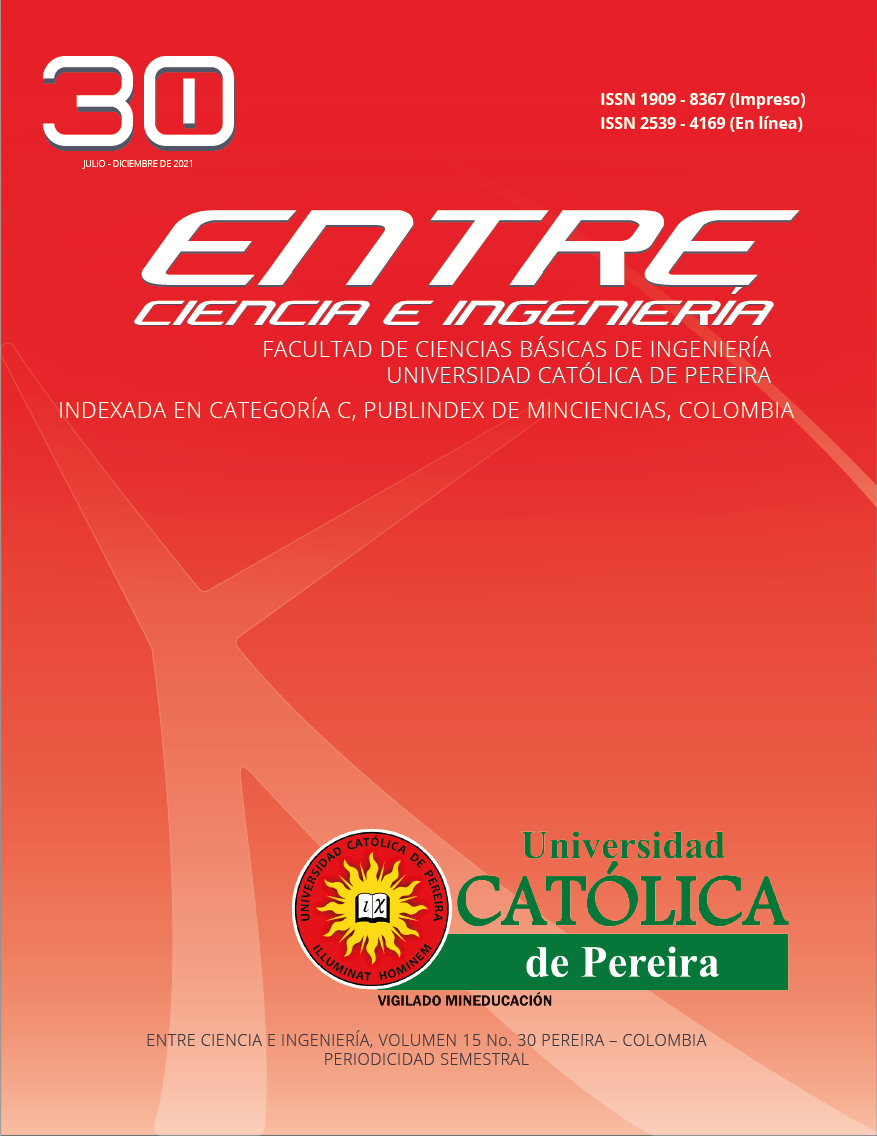Reduction of industrial noise in a metal-mechanical production process: Application of the Lean Six Sigma DMAIC methodology
DOI:
https://doi.org/10.31908/19098367.1819Keywords:
DMAIC, Six Sigma, improvement, occupational health, industrial safetyAbstract
The Six Sigma DMAIC methodology was applied to reduce noise in a metal-mechanical production process. In the definition stage, the workers were consulted, for the measurement stage, noise measurements were made for 10 days in four areas of the company, and 10 points reported by employees as potential sources of noise. The measurements showed that, on average, there were 7 points with a noise level higher than what is allowed by the standard, and the improvement actions established lower noise level averages in the different points. For the control stage, a test of means was performed with paired samples, which showed that the decrease in points was significant, although after the improvement, the milling machine and the polishing machine continued to have noise level averages above the values allowed.
References
C. Bujato, & K. Barrera, “Indebtedness of SMES of the metalworking sector”, Dimensión Empresarial., vol. 17, no 1, pp. 115-129, 2019.
B. Rout, & B. Sikdar, “Hazard Identification, Risk Assessment, and Control Measures as an Effective Tool of Occupational Health Assessment of Hazardous Process in an Iron Ore Pelletizing Industry”, Indian journal of occupational and environmental medicine., vol. 21, no 2, pp. 56–76, 2017.
D. Johnston, M. Pagell, A. Veltri, & R. Klassen, “Values-in-action that support safe production”, Journal of safety research., vol. 72, pp. 75-91, 2020.
G. Stahl, C. Brewster, D. Collings, & A. Hajro, “Enhancing the role of human resource management in corporate sustainability and social responsibility: A multi-stakeholder, multidimensional approach to HRM”, Human Resource Management Review., vol. 30, 100708, 2020.
L. Picu, M. Picu, & E. Rusu, “An Investigation into the Health Risks Associated with the Noise and Vibrations on Board of a Boat—A Case Study on the Danube River”, Journal of Marine Science and Engineering., vol. 7, no 8, pp. 258, 2019.
T. Hanvold, P. Kines, M. Nykänen, S. Thomée, K. Holte, J. Vuori, & K.Veiersted, “Occupational safety and health among young workers in the nordic countries: a systematic literature review”, Safety and health at work., vol. 10, no 1, pp. 3-20, 2019.
R. Golmohammadi, & E. Darvishi, “The combined effects of occupational exposure to noise and other risk factors− a systematic review”, Noise and Health., vol. 21, no 101, pp. 125, 2019.
A. Cruz, M. & Alvarez, “El ruido como factor causante de la hipoacusia en jovenes y adolescentes”, Universidad Médica Pinareña., 16, no 2, pp. 427-427, 2020.
C. Severiche, V. Perea, & D. Sierra, “Ruido industrial como riesgo laboral en el sector metalmecánico”, Cienc. Salud Virtual., vol. 9, no 1, pp. 31-41, 2017.
A. Cabello, N. Chávez, A. Torres, G. Aguilar, O. Trujillo, C. Madrigal, & C. Juárez, “Audiometric findings of printing press workers exposed to noise and organic solvents”, International Journal of Audiology., vol. 60, no 1, pp. 8-15, 2020.
M. Singh, R. Rathi, & J. Garza-Reyes, “Analysis and prioritization of Lean Six Sigma enablers with environmental facets using best worst method: A case of Indian MSMEs”, Journal of Cleaner Production., vol. 279, 123592, 2020.
J. Trujillo, & W. Iglesias, “Determinantes del crecimiento de las micro, pequeñas y medianas empresas colombianas: el caso del sector metalmecánico”, Semestre Económico., vol. 15, no 32, pp. 41-76, 2012.
H. Felizzola, & C. Luna, “Lean Six Sigma en pequeñas y medianas empresas: un enfoque metodológico”, Ingeniare. Revista Chilena de Ingeniería., vol. 22, no 2, pp. 263-277, 2014.
F. Pinho, A. dos Santos, J. de Barros, M. de Almeida, N. de Souza & J. de Jesus Silva, “Proposta de melhoria da qualidade com a implantação da metodologia Seis Sigma”, Research, Society and Development., vol. 9, no 10, e5969108445-e5969108445, 2020.
Z. Acuña, “Mejora del cumplimiento de fechas programadas en servicios de calibración aplicando Seis Sigma”, Revista Industrial Data., vol. 23, no 1, pp. 143-164, 2020.
S. Luis, L. Garcia, & F. Villarreal, “Six sigma: factores y conceptos claves”, Revista De La Escuela De Perfeccionamiento En Investigación Operativa., vol. 22, no 36, pp. 100-113, 2018.
S. Gupta, S. Modgil, & A. Gunasekaran, “Big data in lean six sigma: a review and further research directions”, International Journal of Production Research., vol. 58, no 3, pp. 947-969, 2020.
D. Henrique, & M. Godinho, “A systematic literature review of empirical research in Lean and Six Sigma in healthcare”, Total Quality Management & Business Excellence., vol. 31, no 3-4, pp. 429-449, 2020.
A. Belhadi, S. Kamble, K. Zkik, A. Cherrafi, & F. Touriki, “The integrated effect of Big Data Analytics, Lean Six Sigma and Green Manufacturing on the environmental performance of manufacturing companies: The case of North Africa”, Journal of Cleaner Production., vol. 252, 119903, 2020.
L. Arias, L. Portilla, & J. Castaño, “Aplicación de six sigma en las organizaciónes”, Scientia Et Technica, vol. 1, no 38, 2008.
R. Gómez, P. Medina, & A. Correa, “El Seis Sigma en La Cadena de Suministro”, Entre Ciencia E Ingeniería., vol. 6, no 12, pp. 36-42, 2019.
D. López, “Factores de calidad que afectan la productividad y competitividad de las micros, pequeñas y medianas empresas del sector industrial metalmecánico”, Entre Ciencia E Ingeniería., vol.10, no 20, pp. 99-107, 2019.
“GTC 45, Guía para la identificación de los peligros y la valoración de los riesgos en seguridad y salud ocupacional, no. GTC 45”, Colombia, 2012.
A. Prashar, “Adopting Six Sigma DMAIC for environmental considerations in process industry environment”, The TQM Journal., vol. 32, no 6, pp. 1241-1261, 2020.
F. Vallejo, O. Rubio, J. López, & O. Véliz, “Hipoacusia, una aproximación conceptual dirigida a los trabajadores de Ecuador”, Polo del Conocimiento., vol. 5, no 9, pp. 722-739, 2020.








 Revista Entre Ciencia e Ingeniería
Revista Entre Ciencia e Ingeniería .png) entrecei@ucp.edu.co
entrecei@ucp.edu.co.png) ISSN (Impreso) 1909-8367 - ISSN (En Línea) 2539-4169
ISSN (Impreso) 1909-8367 - ISSN (En Línea) 2539-4169 Attribution-NonCommercial 4.0 International (CC By-NC 4.0)
Attribution-NonCommercial 4.0 International (CC By-NC 4.0)
.png) Carrera 21 No. 49-95 Av. de las Américas, Pereira, Risaralda, Colombia
Carrera 21 No. 49-95 Av. de las Américas, Pereira, Risaralda, Colombia